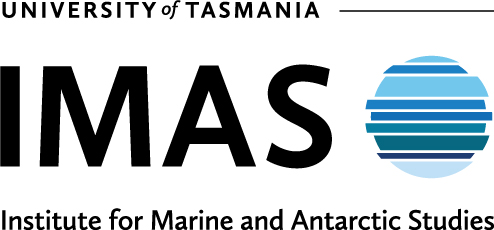Fishery Management
The primary octopus fishery in Tasmania is the targeted Pale Octopus (Octopus pallidus) fishery operating under fishing licence (octopus), known as the Tasmanian Octopus Fishery (TOF). The Scalefish Fishery Management Plan (revised in 2015) provides the management framework for this fishery. Additional octopus catch, including Māori Octopus (Macroctopus maorum) and Gloomy Octopus (Octopus tetricus) is reported as landed by-product within the TOF, the Rock Lobster Fishery, and the Scalefish Fishery, with some Māori Octopus catch from a targeted hand-collection fishery in Eaglehawk Bay.
Octopus fishing zones.
The main fishing method used to target Pale Octopus in the Tasmanian Octopus Fishery is unbaited moulded plastic pots (volume 3,000 mL) with no doors, which are attached to a demersal longline that is 3–4 km long and set on the sea floor at variable depths of 15–85 m (Leporati et al., 2009). Currently, a maximum of 1,000 pots per line is allowed. Octopus are attracted to these pots as refugia; pots are generally hauled after 3–6 weeks soak time. An abundant food supply may support a large population of octopus. When combined with a shortage of suitable shelters, this results in high catch rates. Commercial Pale Octopus fishing within the Tasmanian Octopus Fishery is presently restricted to the Bass Strait and east of Flinders Island. While no further octopus licences can be issued for the Bass Strait area, the remaining State waters are classified as developmental and could be opened to fishing provided necessary research is undertaken. Two permits have been issued for the 2020/21 season for the east and south coasts of Tasmania (from south of Eddystone Point and East of Whale Head). One permit is restricted to the use of 4,000 unbaited pots, the second to the use of 200 unbaited pots and 50 unbaited trigger traps (trigger traps unused for the duration of this permit).
Rock Lobster and Scalefish fishing licences have trip limits of 100 kg of retained octopus, which is the main management control for Māori Octopus. Gloomy Octopus is mostly captured by the TOF, so management is largely controlled by restrictions under fishing licence (octopus).
Management Changes
| Date | Management Changes |
|---|---|
| 1903 | Legislation banning the use of rock lobster pots overturned, which enabled increased retention of Māori Octopus. |
| 1980-90s | Various modifications made to licencing that affected retention of octopus bycatch including access provided to holders of a personal fishing licence, a vessel licence, and a scalefish (or rock lobster) licence. Trip limit of 100 kg applied which limited by-product from lobster pots of Māori Octopus. |
| 2000/01 | Commercial fishing for Pale Octopus and other minor species approved under permit using unbaited traps in Bass Strait (TOF). |
| December 2009 | Two licences issued for the operation of two vessels (sole operator) using unbaited octopus traps in Bass Strait (TOF). |
| 2004/05 | 50-pot sampling program implemented in the TOF Pale Octopus fishery |
| 2016/17 | Two developmental permits issued (no reportable catches) for east coast Pale Octopus fishery |
| 2017/18 | Two developmental permit issued (reportable catches) for east coast Pale Octopus fishery |
| 2019/2020 | Two developmental permits issued (reportable catches) for east coast Pale Octopus fishery |
| 2020/2021 | Three developmental permits issued (reportable catches) for east coast Pale Octopus fishery |
| 2021/2022 | Four developmental permits issued (three with reportable catches) for east coast Pale Octopus fishery |
Management Systems
| Management System | Description |
|---|---|
| Fishing Method | Access provided to holders of fishing licence (octopus), a vessel licence and a scalefish (or rock lobster) licence. Trip limit of 100 kg if not the holder of a fishing licence (octopus). |
| Octopus licences | Two licences issued for the operation of two vessels. |
| Management Method | Input control: – Fishing licence (octopus) allows the use of 10,000 pots (maximum of 1,000 pots per line) to target Octopus pallidus, Octopus tetricus and Macroctopus maorum. – Fishing zone restriction (East and West Bass Strait Octopus zones only). |
| Main Market | Tasmania and mainland Australia. |
| Active Vessels | 5 targeting octopus with unbaited traps (2 operating fishing licences (octopus); 3 operating developmental permits); additional ~200 vessels taking small tonnage (<15 tonnes) of by-product, mainly Māori Octopus. |



